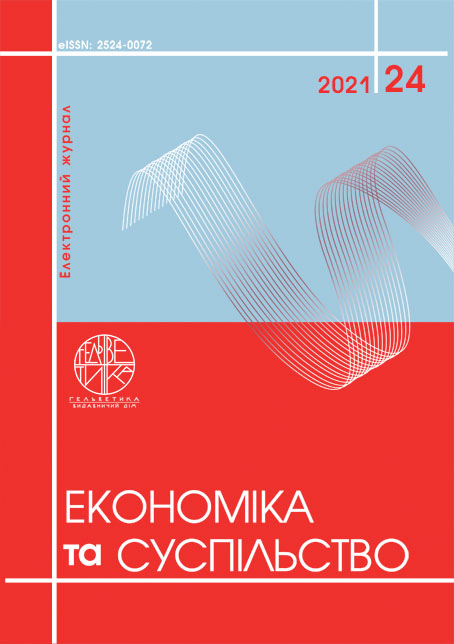ORGANIZATION AND METHODOLOGY OF AUDIT OF FIXED ASSETS AND WAYS OF ITS IMPROVEMENT
Abstract
This article discusses the features of the organization and methodology of the audit of fixed assets, taking into account the provisions of International Standards on Auditing (ISA). Because property, plant and equipment are the basis of any entity, an audit of property, plant and equipment is important in the overall audit of an entity. After all, the rationality and effectiveness of the audit affects the financial results of enterprises. Also, the audit of fixed assets is able to provide public goods. Thus, the application of a scientifically sound audit methodology is an objective process because it helps to display reliable information about fixed assets. The concept of fixed assets is given in this article. After analyzing scientific sources, we can say that from an economic point of view, the term "fixed assets" means tangible assets used in the enterprise for a period exceeding 365 calendar days from the date of their commissioning, and the cost of which gradually decreases due to their physical or depreciation. Auditors record errors and irregularities identified during the audit and determine their impact on the reliability of the financial statements. Audit of fixed assets allows to establish their current and quantitative status, which is reflected in accounting, correctness of depreciation and elimination of their shortcomings, which will increase the efficiency of fixed assets, ensure proper accounting and allow to achieve a high level of quality financial statements of the enterprise. This article the main tasks of the audit of fixed assets are also investigated. The main stages of the audit of fixed assets are presented this article and the features of its conduct are shown. This article the main sources of obtaining audit evidence in the audit of fixed assets were also considered. The impact of the audit of fixed assets on the financial and economic activities of the enterprise is shown this article. Ways to improve the audit of fixed assets are identified this article. The methodological and informational basis of this work are regulations, scientific papers, periodicals and Internet resources.
References
Бутинець Ф.Ф. Аудит : Підручник для студентів спеціальності «Облік і аудит» вищих навчальних закладів. 2-е вид., перероб. та доп. Житомир : ПП «Рута», 2002. 672 с.
Кулаковська Л.П., Піча Ю.В. Організація і методика аудиту : навч. посіб. Київ : Каравела, 2004. 568 с.
Макаренко А. П., Гречана Л. С. Удосконалення методичних підходів до проведення аудиту амортизації основних засобів. URL: http://www.pdaa.edu.ua/sites/default/files/nppdaa/5.3/175.pdf
Огійчук М.Ф., Новіков І.Т., Рагуліна І.І. Аудит: організація і методика : Навч. посібник. 2-ге вид., перероб. в допов. Київ : Алерта, 2012. 664 с.
Утенкова К.О. Аудит : Навчальний посібник. Київ : Алерта, 2011. 408 с.
Міжнародні стандарти контролю якості, аудиту, огляду, іншого надання впевненості та супутніх послуг Видання 2016–2017 років Частина І. URL: https://mof.gov.ua/storage/files/%D0%9C%D0%A1%D0%90%202016-2017_%D1%87%D0%B0%D1%81%D1%82%D0%B8%D0%BD%D0%B0%201(1).pdf
Butynecj F.F. Audyt: Pidruchnyk dlja studentiv specialjnosti «Oblik i audyt» vyshhykh navchaljnykh zakladiv. 2-e vyd., pererob. ta dop. –Zhytomyr: PP «Ruta», 2002. 672 s.
Kulakovsjka L.P., Picha Ju.V. Orghanizacija i metodyka audytu: navch. posib. Kyiv: Karavela, 2004. 568 s.
Makarenko A.P., Ghrechana L.S. Udoskonalennja metodychnykh pidkhodiv do provedennja audytu amortyzaciji osnovnykh zasobiv. URL: http://www.pdaa.edu.ua/sites/default/files/nppdaa/5.3/175.pdf
Oghijchuk M.F., Novikov I.T., Raghulina I.I. Audyt: orghanizacija i metodyka: Navch. posibnyk. 2-ghe vyd., pererob. i dopov. Kyiv: Alerta, 2012. 664 s.
Utenkova K.O. Audyt: Navchaljnyj posibnyk. Kyiv: Alerta, 2011. 408 s.
Mizhnarodni standarty kontrolju jakosti, audytu, oghljadu, inshogho nadannja vpevnenosti ta suputnikh poslugh Vydannja 2016–2017 rokiv Chastyna I. URL: https://mof.gov.ua/storage/files/%D0%9C%D0%A1%D0%90%202016-2017_%D1%87%D0%B0%D1%81%D1%82%D0%B8%D0%BD%D0%B0%201(1).pdf


